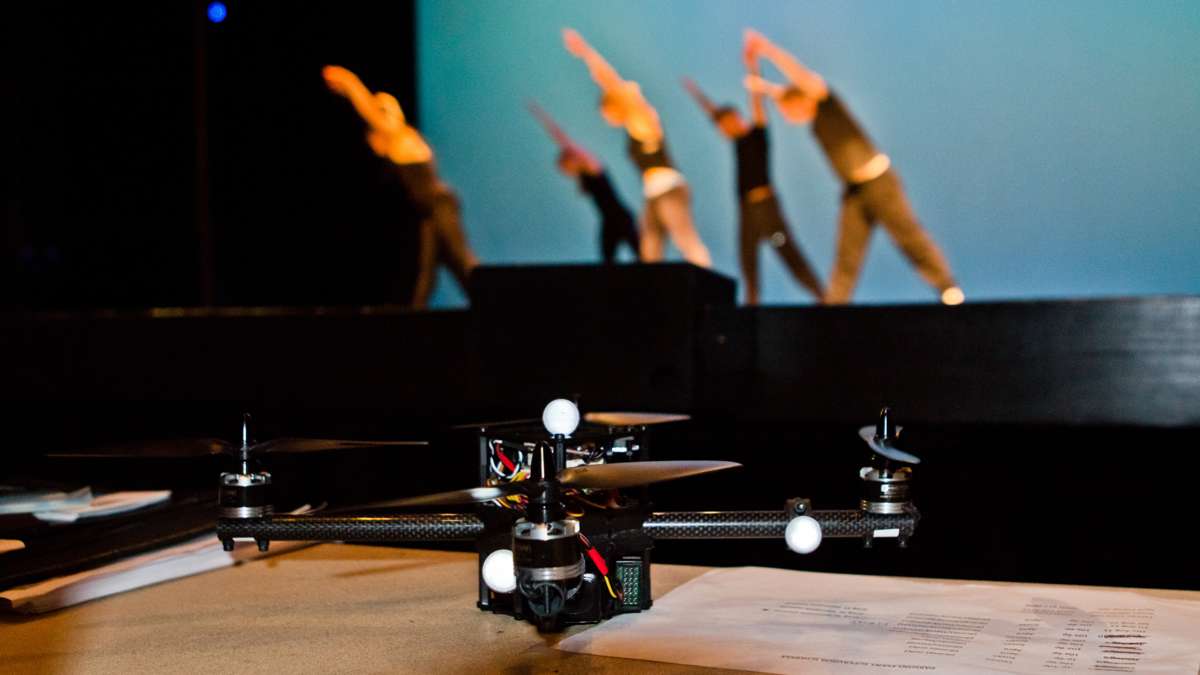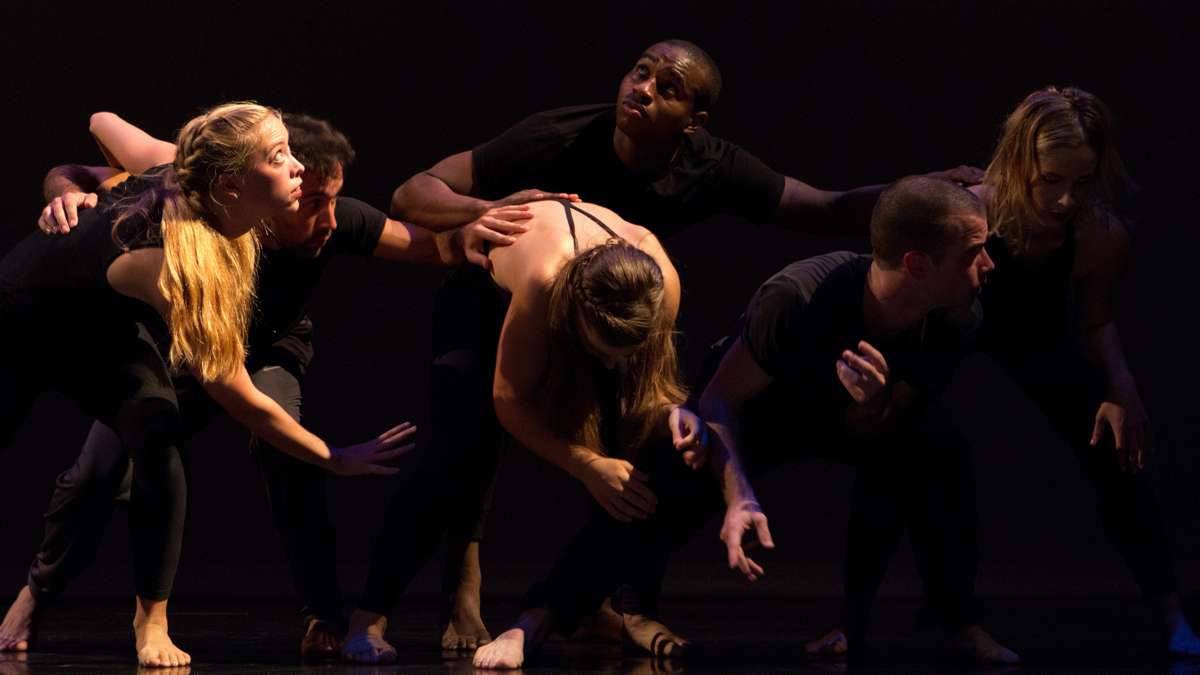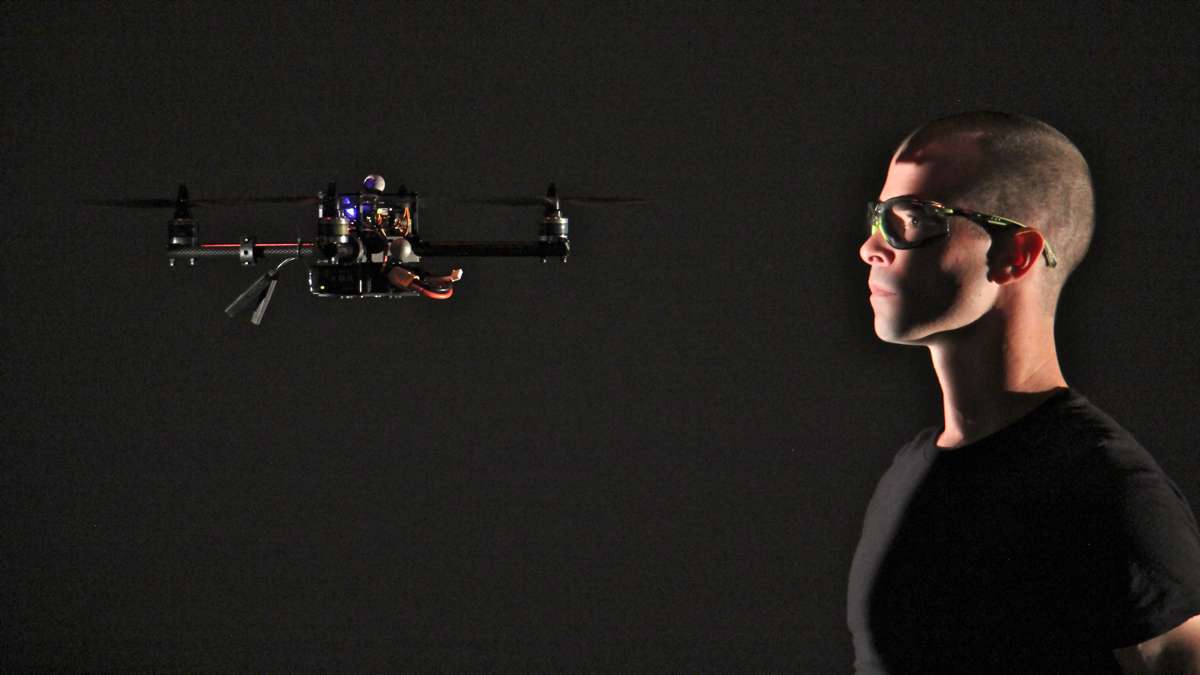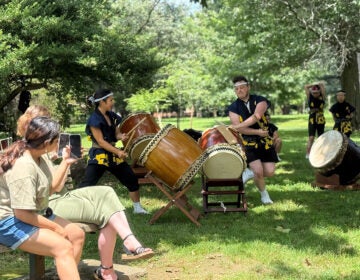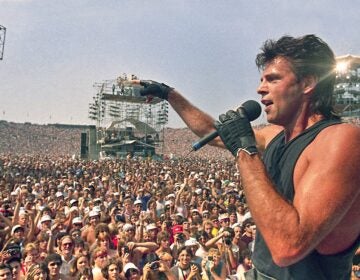Ascent of machines in modern world gives rise to performance of dancers and drones [photos]
ListenA New York dance company has choreographed a fleet of robotic drones to interact with human dancers. It premieres at the Prince Theater in Philadelphia this week.
These are not ordinary drones. They were engineered from scratch by students at Drexel University, in collaboration with the David Parson Dance Company, to fly like a dancer. They have to be lighter and move more quickly than your average, off-the-shelf drone.
“We want the drones to move in a choreographic style,” said Youngmoo Kim, director of Drexel’s Expressive and Creative Interaction Technologies (ExCITe) Center. “It’s not a matter of, ‘Go from there to there.’ There has to be a style to it.”
Making such a drone took a year of design and experimentation. The ExCITe lab was littered with carbon-fiber shrapnel — the drones are made of carbon fiber — from failed flight tests.
“That’s the cost of doing business in robots,” said Kim. “It’s like coaching football … they are always injured.”
Success with dancing drones is measured in their reliably to perform onstage, over and over. Normally, prototype drones need only work once for the experiment to be chalked as a success. In show business, the show must go on and on, night after night.
These drones will go on international tour after their debut in Philadelphia. Parsons has planned 60 performances in the next six months.
It’s more than a technological gimmick, said Parsons. He wanted to create a compact dance — it’s only 8 minutes long — reflecting the quickly accelerating relationship between humans and machines.
The piece begins with dancers evolving from a crawling position to walking upright, then they begin to move with, around, and against the drones.
“It took 6 million years to get that spine erect. All of a sudden, you’re dancing with drones,” said Parsons. “You’re in real time, man. You’re dancing with robotics. It’s an evolution of man and machine.”
Parsons said he had this idea a few years ago, but drone technology was not yet up to the level where it would work. Now, engineers at Drexel University have figured out how to project an infrared light field across the stage: a web of invisible light allowing a computer to track the drones through three-dimensional space in real time. That makes their movements far more precise.
It was the crucial step. The drones must be in constant communication with a computer to make subtle gestures. The infrared light field allows them to exchange information with the computer 100 times a second.
That is how Parsons can bring them into a lifelike relationship with people, even have those movements express personality: hesitation, affection, aggression.
“Some of the relationships are going to be difficult,” said Parsons. “There are going to be beautiful relationships between man and machines — what would we do without cell phones? — but there are going to be other relationships that are not.”
The dance is also a pas de deux of engineering and artistry. The partnership between Drexel and Parsons was a collaborative one, where each had to learn the other’s limits and potentials.
“It’s not a situation where the artist has a vision that the engineers implement. Nor is it, ‘Here are tech toys you can integrate somehow,'” said Kim. “That’s the biggest lesson … in our case, a dance company and a university working together to do something nobody has been able to do yet.”
WHYY is your source for fact-based, in-depth journalism and information. As a nonprofit organization, we rely on financial support from readers like you. Please give today.





